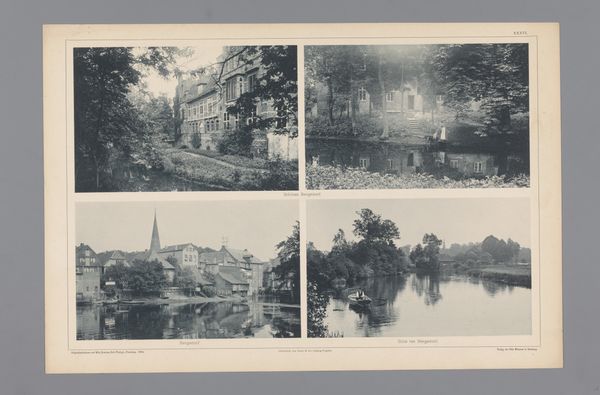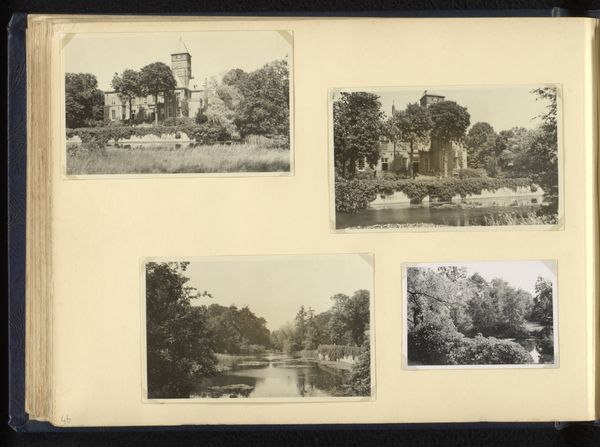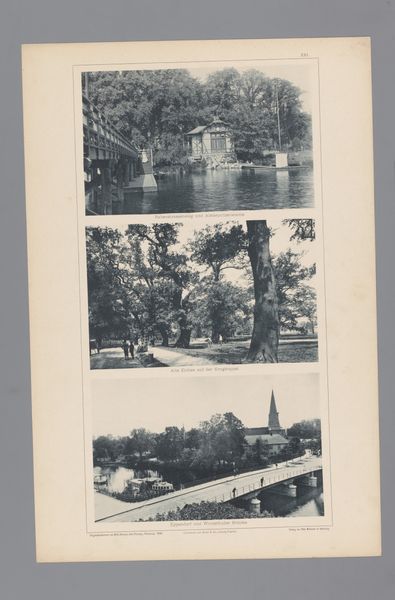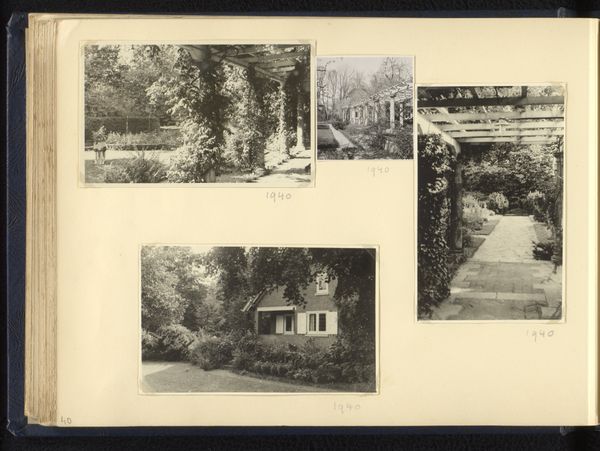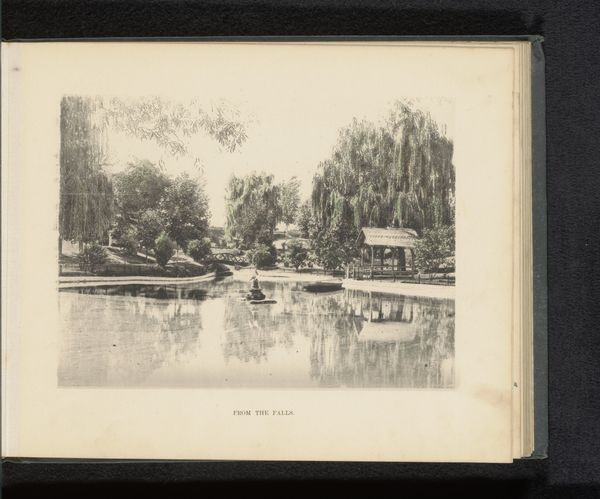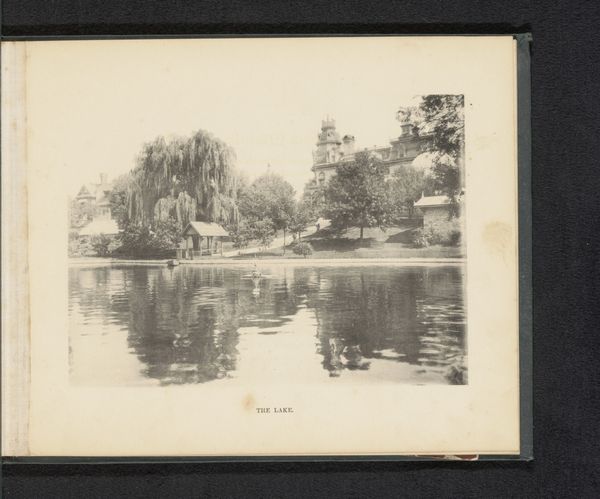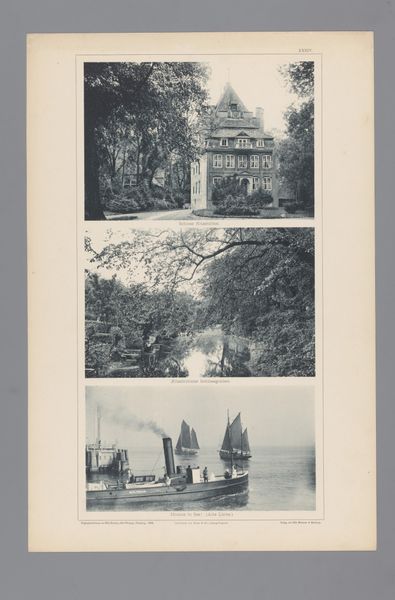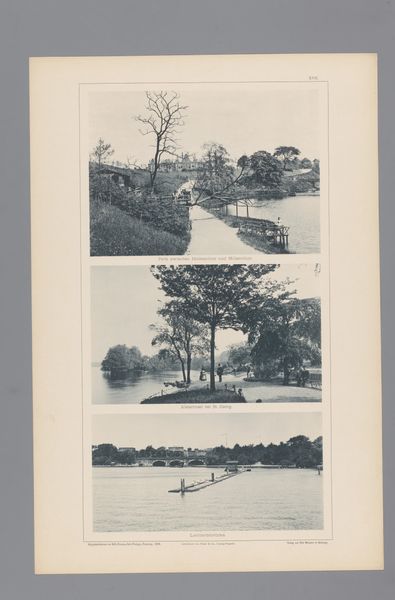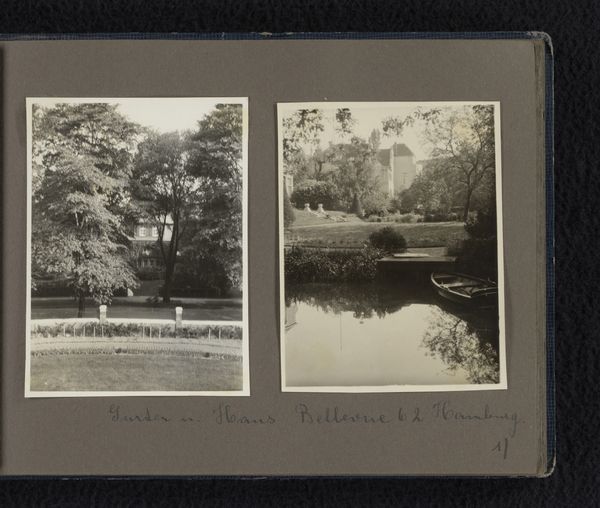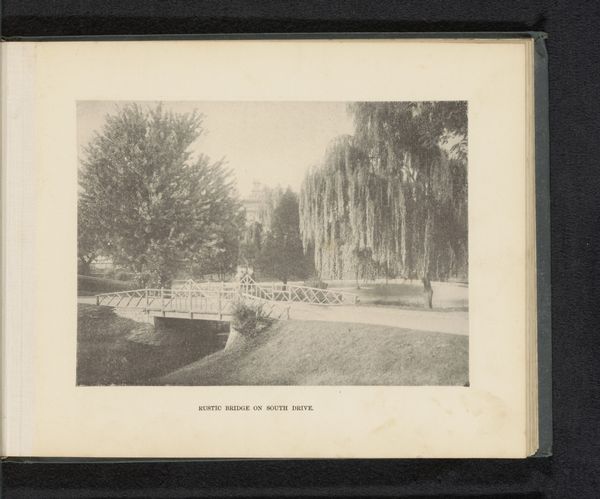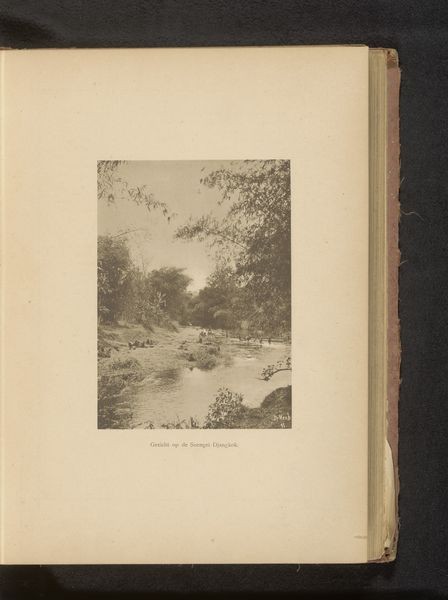
Dimensions: height 490 mm, width 330 mm
Copyright: Rijks Museum: Open Domain
Curator: This gelatin-silver print from 1894 by Wilhelm Dreesen captures, as the title suggests, two views of the botanic garden in Hamburg. What do you make of it? Editor: A certain stillness strikes me first, despite the water, and an old-world romanticism in the light and the almost dreamlike haziness of the trees. There is something profoundly comforting about the formal garden depicted. Curator: Those feelings of comfort may well stem from the social function that public parks fulfilled in late 19th-century urban life. They offered idealized spaces, often showcasing carefully cultivated nature and structures, to offer respite from increasingly industrialized cityscapes. It became a symbolic manifestation of civic pride and offered residents a safe retreat for leisure. Editor: Absolutely. And Dreesen's stylistic choices heighten this sense of escapism, wouldn't you agree? Pictorialism as a movement often imbued photographs with painterly qualities through soft focus, and a selective tonal range to create moods and feelings above objective recordings. We see these ideals manifest quite explicitly here. Look at the softening edges. The scene’s focus evokes something closer to memory. Curator: The inclusion of bridges in both scenes also adds symbolic weight. Historically, bridges are transition spaces, yes? Representing connections between two places, between civilization and nature in this case, inviting the viewer into that cultivated tranquility you mentioned. Editor: Indeed. Though, it makes one wonder about accessibility too. For whom was this paradise built and maintained? It’s a subtle detail but it's important to question whose image of leisure and civility is perpetuated, and for whom such opportunities are afforded, wouldn't you agree? Curator: Good point. Consider then how photography, newly accessible as a medium at the time, captured the imagination of a rising middle class seeking its own symbolic associations. Representations like these were deeply powerful in shaping aspirations and solidifying cultural identity. Editor: Precisely. A visual reminder that landscape photography, while seemingly straightforward, is laden with encoded values, and beliefs about our place in nature, in the urban sphere, and even perhaps in class structure. Curator: So it is, and so we are both perhaps just a little more thoughtful about such things today. Editor: A lovely turn in our day it has been.
Comments
No comments
Be the first to comment and join the conversation on the ultimate creative platform.
